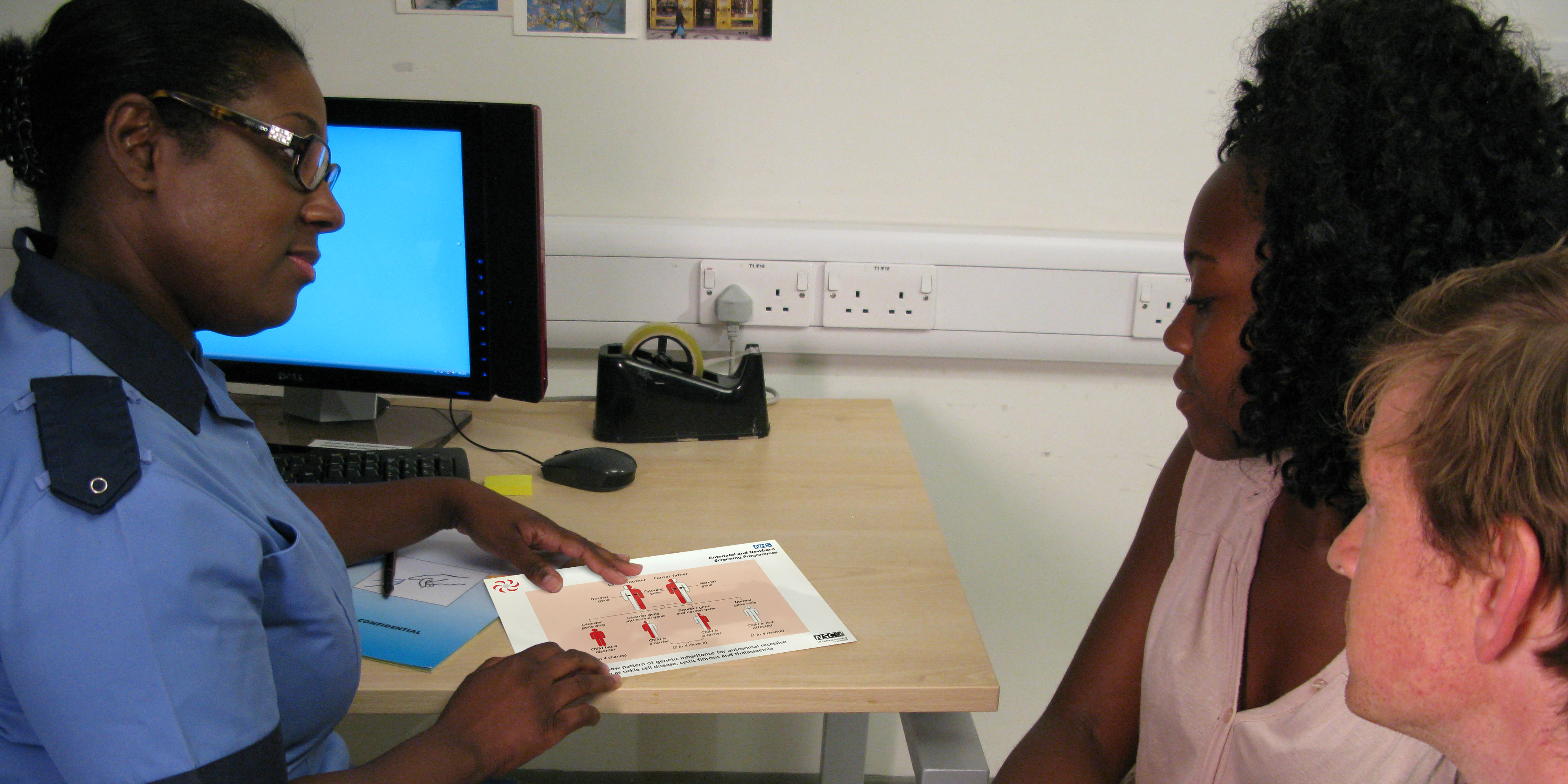The NHS Sickle Cell and Thalassaemia (SCT) Screening Programme screens pregnant women to find out if they’re at risk of having a baby with sickle cell disease or thalassaemia major, 2 serious inherited blood conditions.
Our priorities include improving the early offer of:
- screening to all pregnant women
- prenatal diagnosis (PND) for women and couples who have an increased chance of having a baby affected by sickle cell disease or thalassaemia
Early offer of screening and PND is very important as it helps give women and couples time to make informed choices.
Between 1 April 2014 and 31 March 2016 only 40% of PND tests were performed by the 12 weeks and 6 days standard, a decline of approximately 10% on previous years. The minimum level for this standard is 50%.

As part of a wider investigation into why women are tested late, we commissioned the UK Thalassaemia Society (UKTS) and Sickle Cell Society (SCS) to carry out face to face interviews with women and couples who had recent experience of the SCT programme. Elaine Miller (UKTS) and Iyamide Thomas (SCS) conducted the interviews using a structured questionnaire.
Women who were pregnant within the last 5 years and fell into one of the following categories were invited to participate:
- Those who knew that they (and the baby’s biological father) both carried a gene for sickle cell or thalassaemia and had accepted or declined PND.
- Those who knew that only they carried a gene for sickle cell or thalassaemia and had accepted or declined PND.
Participants told us that prompt referral, or even better ‘self-referral’, to specialist sickle cell and thalassaemia nurses and midwives was very important.
Some healthcare professionals were found to lack knowledge of the conditions and the screening pathway and did not recognise the need for prompt referral to counselling and PND. Some women were given the wrong information or experienced delays in the pathway.
Most women told a healthcare professional about the pregnancy early on and already knew, before becoming pregnant, if they carried the gene for sickle cell or thalassaemia.
We heard from couples who understood they had an increased chance of having an affected baby and had made an informed decision to decline all screening tests. They told us they wanted to:
- hear examples of positive outcomes for affected children
- be put in touch with patient organisations who could find someone in the community to support them
- meet young people and adults who were living successfully with disease
We also heard from couples who had decided they could not bring up a child with the disease and others who might have considered a termination of pregnancy but the offer of PND came too late in the pregnancy to allow reproductive choice.
These couples said it was important for healthcare professionals to:
- have knowledge of the conditions, genetic inheritance and the screening and diagnostic pathway
- be aware that timing of PND is crucial to informed choice
- provide accessible, preferably direct access, to counselling and PND
People also wanted information on pre-implantation genetic diagnosis for future pregnancies. The report includes the SCT programme's response and recommendations for communities, the public and the NHS.
So grateful to those who have been willing to share their stories to make this happen. I am struck by the improvements that exist already between my experiences between 1997 and 2005 and those of the parents featured in the study. A very emotional read but in the context of the comprehensive discussion and guidance surrounding it all, one can be hopeful for the successful implementation and the improvements which will no doubt follow and will benefit our children in the future.
– Lynette and Nick, parents of 2 children with sickle cell disease and members of the project advisory group
What happens next
The parent stories and the findings from this research are an invaluable resource for people commissioning and working in the SCT screening programme.
In the report we have made a variety of recommendations for community organisations, the public and screening providers.
Communities
We recommend raising awareness in communities about:
- the importance of early screening
- that screening and PND are a personal choice and that parents’ decisions are respected
- how the conditions are inherited, the importance of knowing the results of both parents and how to get tested
The public
We recommend that the public:
- keep presenting early in pregnancy or contact maternity services or specialist counselling services directly
- tell healthcare professionals that they want to have counselling and prenatal diagnosis and not to assume that healthcare professionals know what they want
Screening providers
We recommend that screening providers:
- provide direct access to maternity services to arrange a booking appointment
- take the screening sample at first appointment or booking appointment
- provide direct access to specialist counselling services to known at risk couples
- include positive outcomes for children affected by sickle cell and thalassaemia who live in England when counselling (outcomes may be very different in the country of origin)
- provide a secure online web portal for self-referral and GP referral
- provide information on pre-implantation genetic diagnosis
- don’t hold any preconceptions about the choices a couple will make
- keep up to date by attending external courses completing our e-learning module and sign up to the blog
We will follow up on how everyone reacts to this report in another blog within the next year.
PHE Screening blog
PHE Screening BLOG articles provide up to date news from all NHS screening programmes – replacing our previously published newsletters.
You can register to receive updates direct to your inbox, so there’s no need to keep checking for new blog articles.